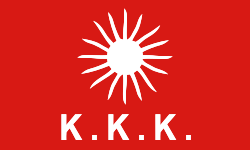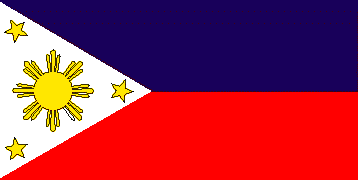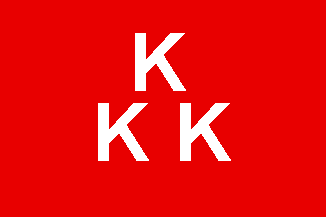ni Gurong Daniel Mendoza Anciano
HINDI SAPAT para sa isa ang espasyo ng pedestal na maaring pagluklukan para sa isang natatanging pambansang bayani na ngayon ay okupado ni Jose Rizal. Sa kabila nito, ang kaangkupan ni Rizal sa pangingibabaw sa pantheon ng kabayanihan ay matagal ng panahon na binabatikos ng mga taong may higit na pagpapahalaga sa bayaning si Andres Bonifacio. Ang tunggalian ng mga mga maka-Rizal at maka Bonifacio ay hindi lamang nakapaloob sa kahalagahan ng nagawa nila para sa ating bayan kundi higit sa lahat ay ang kaangkupan ng dinadalang pilosopiya at reseta ng bawat isa bilang lunas na aksiyon sa mga sakit ng ating lipunan. Sa anumang pagsusuri ng buhay ng dalawang bayani ay malimit na ipakita ang kanilang pagkakaiba at paglalayo, ngunit sa isang malalimang pagsusuri ng kanilang buhay ay makikita ang napakaraming pagwawangis na kinulayan ng matingkad na paglilihis.

Kapwa sila isinilang sa unang hati ng dekada 60 ng nakalipas na siglo, nabuhay at nakisalamuha sa panahon ng kolonyalismo ng Espanya. Nagsagawa sila ng epektibong aksiyon upang ituwid ang tiwaling lipunang kanilang kinamulatan at sa dakong huli ang kanilang nagawa, ang naghatid sa dayuhang pamahalaan sa dapithapon ng kolonyalismo. Isinilang man sila sa iisang panahon ngunit pinag-ibayo naman sila ng pagkakataon. Isinilang si Rizal sa isang bahay na bato sa lalawigan, nagmula sa pangkat ng gitnang uri na noon ay nagsisimulang maging asertibo sa kanilang paghiling ng kapantayan na makilahok sa bumibilis na gulong ng kalakalan. Lumaki si Rizal sa pagkalinga ng kaniyang mga magulang (na naunahan pa niya sa kamatayan) at mga nakakatandang kapatid, partikular na dito si Paciano, na nagsilbing anino sa likuran ng bawat mapagpasiyang hakbang ni Rizal. Taliwas si Bonifacio, isinilang siya sa kalunsuran sa isang tipikal na bahay kubo sa maralitang distrito ng Tondo, nagmula sa mababang pangkat ng mga tao sa lipunan na tuwirang nakadarama ng diin ng pang-aapi, inhustisya, at pagsasamantala. Agad na inulila ng mga magulang at maagang naatangan ng pananagutan na mag-aruga at gumabay sa kaniyang mga nakakabatang kapatid sa pagtahak sa maunos na landas ng buhay.
Kapwa makabuluhan ang kanilang mga nagawa at kaisipan na naiambag sa ating lipunan at kasaysayan. Sa kabila ng kapwa nilang maikling buhay, muli't muling hinahalungkat ng mga iskolar ang kahalagahan at kabuluhan ng dalawa para sa mga henerasyong dumadaan. Sa kabilang kapwa makabuluhan buhay, ang batis ng pambiograpiya ay pinagwangki naman sila. Ang buhay ni Rizal ay halos detalyado sa lahat ng aspekto na ipinapakita ng kaniyang daan-daang dokumento at sangkaterbang litrato na ngayon ay nakasinop sa mga aklatan at arkibo. Ang pagbabatayan sa buhay ni Bonifacio ay ang ilang pira-pirasong dokumento na nagsasaad ng kaniyang mga huling taon, mga tagpi-tagping kuwento ng kaniyang mga naging kasamahan at nag-iisang larawan na tangi lamang kababakasan ng mukha ng taong nanguna sa pinakamapangahas at pinakamapagpasiyang pagkilos ng sambayan sa ating kasaysayan.
Kapwa sila uhaw sa karunungan at pala-aral sa kalagayan ng lipunan. May mga pagkakataon na nagkatulad pa sila ng mga aklat na binasa at nakapukaw ng kanilang kamalayang panlipunan. Ang magkatulad na pagkauhaw sa kaalaman ay hindi naman pinapagparayaan ng magkatulad na kapalaran, labis silang pinag-agwat sa hagdanan ng pormal na kaalaman. Si Rizal ay nagtapos ng lisensiyado sa dalawang kurso: Una ay sa Medisina; at pangalawa sa Piliospiya at Letra sa isang unibersidad ng Espanya. Si Bonifacio sa kabilang dako ay bahagyang natapos ang primarya at ang karagdagang kaalaman ay natamo niya sa dalawang larangan: Una ay sa kalsadang kaniyang ginagalawan; at ang ikalawa sa trabahong kaniyang pinasukan. Sa kabila ng magkaibayong antas ng edukasyon ng dalawa, sa panahong ang bayan ay naghanap ng magiging karibal ni Rizal sa luklukan ng pambansang kabayanihan hindi ang kaniyang mga kapantay sa kaalamang pormal ang itinapat sa kaniya kundi si Bonifacio na ang pormal na edukasyon ay halos nakasubsob sa ilalim ng pormal na paaralan.
Kapwa sila naging aktibong alagad ng Kilusang Propaganda sa panahon na malayo pa sa hinagap ang posibilidad ng isang himagsikan. Sa iisang kilusan na kinasasapian ngunit magka-agwat sila sa aspekto ng kalikasan ng pagkilos at heograpiya ng ginagalawan. Aktibo at nasa rurok ng kasikatan si Rizal sa Kilusang Propaganda sa pamamagitan ng kaniyang pagsulat ng dalawang nobelang panlipunan at mga artikulo sa La Solidaridad na noon ay nakabase sa Europa. Ang partisipasyon ni Bonifacio sa propaganda ay tahimik, hindi pansin, at nakapaloob lamang sa Maynila at limitado lamang sa pamumudmod ng mga babasahin ng propaganda sa kaniyang mga kakilala at ilang mga mag-aaral ng Unibersidad ng Santo Tomas.
Kapwa sila alagad ng literaturang nagbabandila ng protesta, naghahasik ng pagkamuhi sa kalagayang pinananatili ng kolonyal na sistema at nananawagan sa isang pagbabagong panlipunan. Sa kabila nito ay makikita ang paglalaot ng kanilang mga paraan, lawak, istilo, wika, at layunin. Si Rizal sa malaking bahagi ng kaniyang panulat ay nasa anyo ng nobela at mga artikulong may maka-iskolar na pagtrato, ginamit ang wikang Espanyol, at makikitahan ng kapinuhang panliteratura. Hinikayat ni Rizal ang kaniyang mga mambabasa na itaboy ang dilim ng panatismo at pamahiin sa pamamagitan ng liwanag ng karunungan at abutin ang kapantayang kultural at intelekwal sa ating mga mananakop upang maging isang mabisang sandata sa isang ebolusyong panlipunan. Sentro ng pagbatikos ni Rizal ang frailocracia na noon ay nagsisilbing moog ng pyudal na kaisipan at humahadlang sa pagdaloy ng liberalismo at reporma sa kolonyal na gobyerno. Si Rizal bilang isang repormista ay nakikita pa ang posibilidad na masulsihan pa ang ang naagans na retaso ng kolonyalismo. Ganap ang kataliwasan ni Bonifacio, ginamit niya ang wikang Tagalog sa kaniyang maiikling artikulo na sinasabi ng ilan na "magaspang" at "hubad sa bulaklak ng retorika." Sa kabila ng "kababawan" at "hindi repinado" ng kaniyang sulatin ay tuwiran niyang hinikayat ang sambayanang Pilipino sa pag-aaring ganap ng isang higit na agresibong aksiyon upang patirin ang kadena ng kolonyalismo na mariing sumasakal sa buhay at kaisipan ng kaniyang mga kababayan. Kay Bonifacio ay walang pagkakaiba ang frailocracia at ang kolonyal na burukrasya, hindi ang pagsusulsi ng agnas na retaso ng kolonyalismo ang dapat na maging katugunan kung hindi ang paghahangad ng bagong retasong panlipunan na hahabiin ng mga kamay ng mga taong lalahok sa himagsikan.
Kapwa laman ng isipan ng dalawa ang armadong opsiyon sa pagbabagong mukha ng lipunan at pinaglaro nila ito sa kanilang mga kaisipan. Ang magkaparehong pagmumuni ng armadong pakikibaka sa isipan ay inilapat nila sa magkaibang kinalalagyan. Ang armadong opsiyon ni Rizal ay makikitang dinala ng kaniyang mga tauhang sina Elias at Simoun, pinaglaruan niya ang katumpakan at kahinaan ng armas bilang kasangkapan sa pagbabagong anyo ng lipunan, ngunit natakot si Rizal na ang himagsikan sa kaniyang isipan ay malipat at maganap sa mismong lipunan, kaya ito ay kaniyang kinulong at kinitil pa sa pahina ng panitikan. Para kay Bonifacio, bigo ang ebolusyonaryong bisyon na ibinabandila ng mga repormista at ang pagsasakatotohanan sa lipunan ng isang rebolusyon ang tanging landas na tatahakin ng sambayan sa pagtatamo ng kanilang inaadhiang kasarinlan.
Kapwa naimpluwensiyahan sila ng martiyo ng GOMBURZA noong 1872 at kinikilala nila ang binhi ng tatlong paring martir sa pagsibol ng kolektibong nasyonalismo ng sambayang Pilipino, ngunit ang paraan ng paghanga ay isinagawa sa magkaibang paraan. Ang Noli Me Tangere ay isang nobelang pang-inbestiga kung papaanong ang repormista ay isinangkot sa krimen na ang mga prayle ang tunay na nasa likuran. Dinakila ni Rizal ang GOMBURZA sa paghahandog nito ng kaniyang El Filibusterismo. Nag-inbestiga rin si Bonifacio sa tunay na pangyayari sa kaso ng GOMBURZA noong kaniyang direktang litisin at ipabitay ang mga nabihag na prayle sa Cavite. Dinakila rin ni Bonifacio ang GOMBURZA sa pamamagitan ng paggamit na nasabing panitik bilang senyales ng isa sa mga pangkat ng Katipunan.
Kapwa sila pulitiko na humarap sa magkahiwalay na halalan na isinagawa ng kanilang mga kababayan na nagbunga ng kanilang paghiwalay sa mga dating kasamahan. Si Rizal ay natalo sa hinihinging mayorya sa halalang ginanap ng mga repormistang paisano sa pagpili ng kanilang magiging pinuno sa Madrid, ito ang simula ng alitang Rizal at Marcelo del Pilar. Si Bonifacio ay natalo sa ginanap na unang halalang pampangaluhun na ginanap sa Tejeros na nagbunga ng kaniyang paghiwalay kay Emilio Aguinaldo at sa huli ay ang pagpaslang sa kaniya ng mga dating kasamahan.
Kapwa mahalaga sa dalawa ang unang linggo ng Hulyo 1892. Noong Hulyo 3, 1892 (Linggo) nagtagpo sa una at huling pagkakataon sina Rizal at Bonifacio ng itatag ng huli ang La Liga Filipina. Simbolikal ang pagtatagpo na ito nagsilbing parang isang transisyon ng ng dalawang historikal na nilalang sa sentro ng politikang kontra kolonyal. Ang pagtatag ni Rizal ng La Liga Filipina ay sinundan ng pagpapatapon sa kaniya sa Dapitan at panimula ng kaniyang pagkakahimbing pulitikal. Noong Hulyo 7, 1892, itinatag ni Bonifacio ang Katipunan na hudyat ng kaniyang pangingibabaw sa larangan ng kontra kolonyal na pakikibaka.
Kapwa sila pinuno ng Kilusang Katipunan, pamumuno na may magkaibang katayuan at kalikasan. Si Bonifacio, ang supremo ang aktibong nagpakilos, nagpalaganap, nagpalakas, at naghanda ng kilusan para sa ilulunsad na himagsikan. Samanatalang si Rizal na noon ay walang kamalay-malay sa mga kaganapan sa Kamaynilaan, ang inilagay na pangulong pandangal ng samahan.
Kapwa sila biktima ng puwersang panlipunan na kanilang pinasimulan sa pamamagitan ng pagbabayad ng kanilang mga buhay. Ang repormistang si Rizal na ang mapanuring panulat ay nakagising sa kaniyang mga kababayan sa pangangailangan ng pagbabago sa pamamagitan ng mapayapang pamamaraan ay pinaratangan na nasa likod ng himagsikan. Si Bonifacio naman na nagsindi ng mitsa ng himagsikan ay pinagbintangan ng kaniyang mga kasamahan ng "pagtataksil" laban sa rebolusyon na kaniyang pinamunuan at pinasimulan.
Kapwa sila mga biktima ng mga hukumang hubad sa kredibilidad. Ngunit ang pinakamalaking kablintunaan ay si Rizal na nanalig hanggang sa huling sandali ng kaniyang buhay sa posibilidad ng reporma mula sa mga dayuhang kapangayrihan ay nilitis ng bengatibong korte militar ng Espanya. Samantalang si Bonifacio na naglagak ng pagtitiwala sa kakakayahan ng mga kaniyang mga kababayan sa pagpapalaya ng bayan ay nilitis ng makiling na korte militar ng gobyernong rebolusyonaryo ng mga Pilipino.
Kapwa sila nagsalo sa iisang tulang pahimakas. Isinulat ni ni Rizal sa Kuta ng Santiago ang kaniyang Mi Ultimo Adios sa bisperas ng bitayan. Pagkatapos ng martiryo ni Rizal, ang kaniyanga asawa na si Josephine ay nagtungo sa Cavite, dito ay hiniram ni Bonifacio ang orihinal na tula ni Rizal at isinalin ito sa wikang Tagalog. Kung mayroon mang maangkin si Bonifacio na kaganapan para sa kaniya sa nasabing tula ay ang hanay na nagpapahiwatig ng ganito.
Kung ang libingan ko'y limot na ng lahat
at walang krus at batong mabakas
bayaang linangin ng taong masipag
lupa'y asarolin at ikalat
Kapwa sila biktima ng malagim na bitayan sa huling hati ng dekada 90 ng nakalipas na daantaon. Magkatulad na kamatayan sa magkabalintunang lugar na kinaganapan. Si Rizal na isinilang sa lalawigan ay hayagang binitay sa pampublikong lugar sa kalunsuran. Si Bonifacio na isinilang sa kalunsuran ay palihim na binitay sa paanan ng bundok sa lalawigan.
 |
| "The Martyrdom of Rizal" (1964) ni Carlos "Botong" Francisco -
"Ang Wakas ni Andres Bonifacio" (1963) ni Carlos Valino, Jr. |
Kapwa sila biktima ng inhustisya sa panahon ng kanilang buhay at sa kasalukuyan, ang kanilang kamatayan ay ibinabalot pa rin sa misteryo ng kasaysayan. Magkaibang salarin na hindi matatawaran ang impluwensiya hanggang sa kasalukuayan. Ang salarin ni Rizal ay pinagtatakpan ng simbahan at ang salarin ni Bonifacio ay pinagtatakpan ng mga inapong maimpluwensiya pa rin sa pamahalaan.
Kapwa ginugunita ng bayan ang kanilang ala-ala sa pamamagitan ng pambansang tanging araw na magkaiba ang pinag-uukulan. Si Rizal sa araw ng kaniyang kamatayan, samantalang si Bonifacio sa araw naman ng kaniyang kamatayan. Mapansin din sana ang insidente ng pagkakataon, ang buwan ng Nobyembre (30) na kapanganakan ni Bonifacio ay sinusundan ng Disyembre (30) na buwan ng kamatayan ni Rizal. Ang buwan ng Mayo (10) na buwan ng kamatayan ni Bonifacio ay sinusundan ng buwan ng Hunyo (19) na kapanganakan ni Rizal.
-------------------------------------------------------
Ang may-akda ay guro ng Kasaysayan ng Pilipinas sa Cavite State University, Indang, Cavite.
Inilithala sa kanyang orihinal na porma sa FILIPINO MAGASIN (FILMAG) noong 1997.
UKOL sa MGA LARAWAN:
"Ang Wakas ni Andres Bonifacio" ni Carlos Valino Jr. ay n
analo sa 1963 Andres Bonifacio Centennial Art Contest. Ang larawan ay kinopy ni Prop Michael Chua sa aklat na
Tragedy of the Revolution (akda ni Adrian E. Cristobal) subali't ito ay masusulyapan ng buo ngayon sa Bulwagang Katipunan ng Manila City Hall.
"The Martyrdom of Rizal" ni Carlos "Botong" Francisco na nilikha noong 1964 ng naging National Artist for Painting1964 Republic of the Philippines Cultural Heritage awardee ay sinasabing
nasa private collection ngayon.
 Reposts are licensed to the respective authors.
Reposts are licensed to the respective authors. Otherwise, posts by
Jesusa Bernardo are licensed under
Creative Commons Attribution-NonCommercial-ShareAlike 3.0 Philippines.

 Supposedly the first official revision of the Katipunan flag when military leaders at the 1897 Naic Assembly adopted a design of mythological sun having eight rays but retaining the white-and-red colors.
Supposedly the first official revision of the Katipunan flag when military leaders at the 1897 Naic Assembly adopted a design of mythological sun having eight rays but retaining the white-and-red colors.



 Reposts are licensed to the respective authors. Otherwise, posts by Jesusa Bernardo are licensed under Creative Commons Attribution-NonCommercial-ShareAlike 3.0 Philippines.
Reposts are licensed to the respective authors. Otherwise, posts by Jesusa Bernardo are licensed under Creative Commons Attribution-NonCommercial-ShareAlike 3.0 Philippines.







